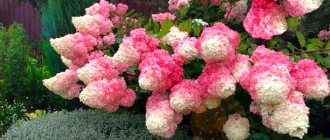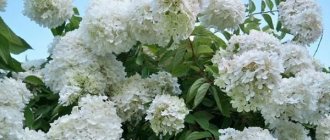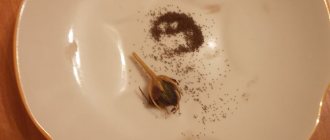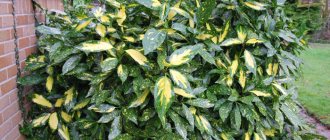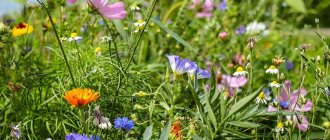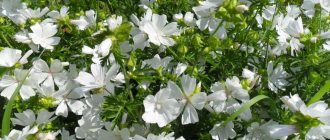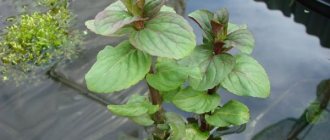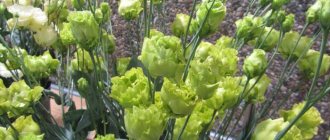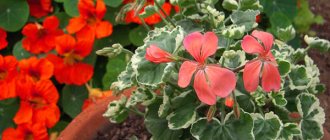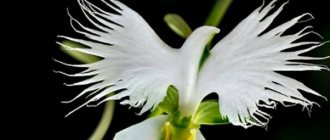There are herbs that many have never heard of, much less know how to use them and why. And there are ones that almost everyone knows from childhood. Among the latter is mint. Fragrant, healthy, with an expressive taste and great culinary and medicinal potential, the herb is truly known to everyone. Varieties of mint - photos and names, descriptions and characteristics, that's what this article is about.
Pepper
Peppermint or English mint was created by crossing wild species (mint arvensis and wild mint) in England in the 17th century. The name pepper is explained by the presence of a burning taste of the leaves of the plant.
A perennial herbaceous medicinal plant with a pleasant aroma. There are more than 100 types of mint.
Chocolate
Perennial herbaceous plant . A subspecies of peppermint. The leaves are simple, elongated with serrated edges of a purple hue. The leaves have a light chocolate aroma. The stem is tubular, 60-120 centimeters high. The inflorescences are white-pink, less often purple or lilac. Blooms from June to August. Loves lighted areas, but also grows in the shade. Requires watering. Grows everywhere. Used for making tea and desserts. It is an excellent antiseptic and tonic.
Coleus
Tropical ornamental plant of the Lamiaceae family. The plant can act as a shrub, subshrub and annual herbaceous plant. The stems are tetrahedral, erect, 50-80 centimeters high. The leaves are serrated, broadly oval in shape, very brightly colored, velvety with various patterns of white-pink-green, bright red, dark brown, purple, violet. The flowers are located at the top of the plant in the shape of a complex spike. Coleus love bright light and plenty of watering with soft, warm water. They grow in countries with tropical climates. Widely used in medicine and as decoration for flower beds.
Mexican
A perennial plant with a pleasant spicy aroma of mint and anise. The stems reach a height of up to 1.5 meters. The leaves are ordinary oblong. The flowers are candle shaped. They come in white, violet and lilac colors. Flowering period
from mid-June to late autumn.
Curly
A perennial herbaceous hybrid plant with a pungent odor. The stem is densely leafy, with a height of 30 to 100 centimeters. The leaves are sessile on short petioles, curly, ovate, pubescent on both sides. The flowers are small, collected in false whorls, pink-purple in color. Flowering period from late June to late September. Grows in Ukraine and Crimea.
How to choose and where to buy mint?
Pharmaceutical mint
It is advisable to harvest mint in person, especially due to the simple technology. But sometimes this is not possible for various reasons. Then you can buy a plant based on the following factors:
- Give preference exclusively to opaque containers or packs, as exposure to direct sunlight causes mint to lose its aroma and color.
- Mint packaging should be opaque.
- Ask the seller about how mint is stored and whether the basic conditions are met. Of course, it is impossible to track the entire storage period of the spice, but pay attention to all the details. Dried mint should not be left in the sun or in a transparent or sealed bag.
Keep in mind that dried mint has the same bright green color and rich aroma as the fresh product. A slight loss of color is allowed and no more. A pale or weak-smelling spice indicates improper storage; it is best to give preference to a product from another manufacturer.
Advice! You should not buy a product if the packaging is torn or even opened. Most likely, the spice has already lost its amazing aroma.
Room
There are several popular varieties of indoor mint. It is grown at home as an unusual flower. Some varieties can be freely used for culinary purposes.
Prayer tree
Perennial houseplant in the form of a shrub. Evergreen. The stem is thin, well branched, reaching a length of 1 meter. The leaves are small, pubescent, with a subtle pleasant scent. The edges of the leaves are carved. The flowers are ordinary purple in color, collected in inflorescences. The plant is light-loving. At room temperature it blooms all year round.
Scandinavian ivy
Indoor herbaceous plant
with lodging shoots. The stem is creeping. Reaches 1 meter in length. The leaves are rounded at the edges, jagged, green in color with a shiny tint. Not picky, grows in any climatic conditions.
Plectranthus Ertendahl
The houseplant is exclusively decorative in the form of a subshrub. Stems are erect and up to 1 meter high. The leaves are velvety bright green on one side and purple on the other. Blooms profusely. The flowers are collected in white false whorls.
Harvesting mint for the winter
Mint is very popular as a spice due to its rich aroma and refreshing taste. That is why its preparation is in great demand. It is important to know how to carry it out correctly.
To obtain the spice, proceed as follows:
- Pick mint leaves.
- Dry in a dark place. Take care to exclude the possibility of exposure to sunlight.
- Next, the dried leaves are crushed in a convenient way.
- All that remains is to seal the finished spice.
- It is best to store mint in a dark place, protected from light. The storage container must be tightly closed. This will guarantee the preservation of the aroma for a long time.
Advice! Only when dried in a dark place without direct sunlight can the color and rich aroma of mint be preserved.
Field
A perennial medicinal fragrant plant with a long creeping rhizome. The single, pubescent stem is branched and erect, from 15 to 45 centimeters in length. The leaves are petiolate, oval, finely toothed along the edges. The flowers are small
pink-violet or lilac. Blooms all summer until late autumn. It grows everywhere.
Here you will find a selection of 100 wild and meadow flowers with photos and descriptions
https://woman-l.ru/100-polevyx-cvetov/
Mint for weight loss
In the difficult fight against excess weight, mint is a good helper. The taste and aroma of the culture helps reduce appetite. The reason for this is the presence of menthol. Mint tea dulls the feeling of hunger and promotes overall health of the body.
Aromatherapy is an opportunity to suppress appetite, which means reducing the daily amount of calories consumed. It is enough to inhale mint essential oil two or three times a day, and positive results will be noticeable within a week. Combining this treatment with peppermint tea helps further detoxify.
Worth knowing! Keep in mind that toxins are the cause of cellulite. Their removal promotes weight loss. Additionally, ginger can be used as a component of tea, which speeds up metabolism and prevents stomach irritation and heartburn.
Sadovaya
Perennial herbaceous plant. The stem is annual, tetrahedral, 30 to 100 centimeters high. The leaves are oblong, ovate with pointed tips, smooth above, pubescent below. The flowers are small, purple in color. Flowering period from July to late summer. Grows in the south and southwest of Russia.
Interesting Facts
There are many interesting facts known about mint:
- Mint leaves and honey fight off the smell of alcohol.
- A mint leaf in your wallet brings good luck in finances, as the belief goes.
- Regular consumption of mint prolongs life.
- It is believed that if you stuff your pillow with mint leaves, you will only have positive dreams.
- Historical references indicate that mint was known before our era. Mint was even found in the tombs of the pharaohs of Ancient Egypt.
- Mint perfumes have been made for a long time; the first of them appeared in Jerusalem.
- In Italy, mint is added to wine to make the drink fresher.
Video: mint on the window
Mint is an amazing plant that is actively used by people in different areas of life. The plant is used in cooking, medicine, weight loss, cosmetology, aromatherapy, etc. Remember that mint helps relieve pain, calm the nervous system and dull the appetite.
Share this page with your friends!
Lemon
Herbaceous perennial plant. The stem is erect and very branched. Stem height is from 30 to 125 centimeters. The leaves are ovate along the edge, coarsely toothed, opposite, petiolate. The flowers are small , inconspicuous, less often yellow or pink. They are collected in a corolla of 6-12 pieces. Flowering period from July to August. Grows in Ukraine and Moldova.
Use of mint in cooking
Mint is a popular ingredient in world cuisines. Many people know mint tea, but the use of the product is not limited to it. Mint is used in different areas:
- It is one of the main spices in oriental cuisine.
- Menthol and peppermint oil are excellent flavorings used in a variety of dishes and drinks.
- Fresh leaves are used to decorate desserts, as well as meat dishes and salads.
- Peppermint oil is a sought-after component in baking, allowing it to enhance the taste.
- Mint is used in soft and sometimes strong drinks.
- The plant is a natural dye.
- The product allows you to increase the shelf life of dishes.
- Mint adds piquancy to meat, and is also used in salads, first courses of vegetables, and fish dishes.
Mint leaves must be kept refrigerated because they wither quickly. They are added at the very end, that is, before serving, so that the refreshing properties have not been lost.
Flea
perennial herbaceous plant
family Lamiaceae.
The stem is erect, branched, 20-60 centimeters high. The leaves are oblong, elliptical, wedge-shaped at the base, serrated along the edge. The flowers are small , collected in thick spherical rings, the corolla is pink-purple with a white tube. Blooms in July-August. It grows in floodplain meadows, along river banks in the western regions of Ukraine, in the south of the Caucasus, and in Central Asia.
Exotic varieties
While the description of the varieties listed above may be more or less known, the varieties discussed below are still exotic in our areas. But if watermint or longleaf mint are a little boring, and you want something new, below is a description of plants that can surprise you.
Korean mint
Another name for the culture is Tibetan lofant. Its homeland is Central Asia. The shrub is quite tall, from 80 to 125 cm. The leaves are oval, with sharp edges. Indeed, the look is similar to aniseed lofant, only the Tibetan flowers are exclusively white.
With the help of this plant, they get rid of dandruff, minimize the appearance of acne, and treat wounds, rashes and ulcers. The plant also helps normalize sleep and serves as a remedy that helps to relax and relieve fatigue. A little Korean mint infusion is added to baths for bathing babies: it is believed that the baby falls asleep better after such “SPA treatments.”
Doggystyle
And it is otherwise called ivy-shaped budra. It grows almost everywhere: you can come across it in the garden, in the vegetable garden, and in the forest. Despite all its usefulness, the culture is highly toxic; methods of use for medicinal purposes must be agreed with a doctor.
A bronchial infusion is made from dog mint. If you overdo it with the dosage or drink infusions or decoctions for several days in a row, flu-like symptoms will appear. It is also considered an anthelmintic. People call dognip “forty-day mint,” but its effect can be excessive; caution is needed.
Feline
A perennial plant with a light lemon aroma. The stem, spreading along the soil, is tetrahedral, green, and has a strong, peculiar odor that attracts cats. Stem height is 40-100 centimeters. The leaves are velvety, green and jagged along the edges. The flowers are small, funnel-shaped, collected in long inflorescences of white color with purple specks. Flowering period June-July. It grows everywhere.
About the plant
The plant has a wide distribution. Used in cooking, cosmetology, medicine and other industries. Most varieties contain large amounts of menthol and have a strong odor. The plants are perennial and prefer cultivated soil. They are not picky about care and do not require fertilizing or frequent watering. They reproduce by roots, leaves and seeds.
When growing mint on the site, you should not plant it in the ground. It is better to limit it to a container, then the roots will not extend beyond the limited area. All parts of the plant, flowers, leaves, stems and roots are used. The leaves are collected after the plant has finished flowering. Dry and put in glass containers. The spice is grown on an industrial scale and is used in many industries.
wild
Herbaceous perennial plant with a subtle fragrant menthol aroma. The stem is like that of ordinary peppermint, 15-100 high. The leaves are oblong, pointed, ovate with serrated edges. Flowers of a lilac or pinkish hue are collected in whorls. Blooms all summer and autumn from June to October. Grows throughout Russia.
What are the benefits of mint?
Mint has a huge number of beneficial properties. Namely:
- Reducing nausea.
- Calming the nervous system.
- Mint is a component of many folk and traditional medicines.
- Removing excess fluid from their body.
- Anti-inflammatory effect.
- Acceleration of hair growth.
- Relief from spasms and pain.
- Choleretic effect.
- Neutralization of bad breath.
- Skin cleansing.
- Sobering effect.
- Improving brain function.
- Decreased appetite (thanks to menthol in the composition).
- Toning and general strengthening of the body.
Advice! Mint refreshes the mouth well thanks to its menthol taste and aroma. It is used as a sedative and helps to establish sleep patterns. There are different ways to use mint, according to which it can both warm and cool the body.
Doggystyle
perennial herbaceous plant
with creeping rhizome. The stem is pubescent, branched, tetrahedral, up to 60 centimeters high. The leaves are paired, opposite, long-petiolate, rounded-heart-shaped with a strong unpleasant odor. It blooms blue, light purple, less often reddish or white. The flowers are tubular, two-lipped, collected in whorls of several pieces. Flowering period from June to August. Grows in the European part of Russia, the Caucasus, Central Asia and Kazakhstan.
Harm and contraindications of mint
Mint, like most products, has a number of contraindications. The main ones include:
- varicose veins;
- tendency to heartburn;
- infertility, difficulty conceiving and other gynecological problems;
- allergic reaction to the crop or its components;
- increased drowsiness;
- low blood pressure (mint tends to lower it);
- young age (up to 12-14 years).
The product may also cause harm. In particular, with an overdose, heartburn is observed, in addition, loss of sensitivity to the components of the plant (for example, menthol) is possible. An overdose can occur with regular and large quantities of mint tea. In this case, it will first stop giving the desired effect, and then cause harm to the body.
Korean
Perennial medicinal plant, excellent honey plant. The stems are straight, reach 1 meter in height, smell of licorice, and are densely covered with leaves. The leaves are collected in brushes about 10 centimeters long. They have a faint anise taste. The flowers are purple-blue, tubular up to 1 centimeter long, collected in dense spike-shaped inflorescences. Flowering period
very long from May until winter.
Mint in cosmetology
The plant is good at eliminating skin irritations and rashes, so it is often used in cosmetology. Manufacturers take into account the antiseptic properties of the plant when creating various cosmetics. Mint extracts are predominantly used.
The culture helps to tone the skin, soothe it, eliminating irritation or at least minimizing it. Mint is useful in caring for oily skin, as it helps tighten pores. The plant perfectly smoothes the skin, cleansing it of toxins, which is why it is often used for rejuvenation. A regular mint infusion is an excellent alternative to an expensive cream.
Worth knowing! Mint is used to create masks, balms, and shampoos for the hair of the plant due to its ability to stimulate blood circulation, accelerate hair growth, prevent dandruff, and also provide general caring care for the scalp.
Melissa
Perennial herbaceous, medicinal, honey plant. The stem is erect, tetrahedral, branched, pubescent, 30-120 centimeters high. The leaves are opposite, pubescent, the lower ones are heart-shaped, long-petiolate, serrate along the edges, the upper ones are oblong, toothed. The flowers are usually small, white or pink.
Water
Perennial herbaceous plant. The stems are hairy, tetrahedral, and often creeping. The leaves are oval along the edge, serrate, up to 6 centimeters in length, sometimes reddish, more often green, with a pungent aroma of bergamot. The flowers are very small, light lilac, collected in small fluffy inflorescences. It usually blooms in July.
Plant species
Meadow or field plant
It can be found in European, Asian, Caucasian, Indian or Nepalese markets. It also grows along river banks, near other bodies of water. The essential oil has a specific pungent odor and a sugary, bitter taste that combines menthol and various citrus notes.
According to experiments, it was found that a person who inhales the aromas of mint of this variety will reduce the consumption of fats, proteins and carbohydrates several times over the course of 24 hours. The plant is used as an additive to dishes, in the pharmacological field (treats bloating, inflammation of the stomach, heartburn).
Ginger type
Among all the varieties of mint presented, it is worth highlighting ginger, which so far grows mainly in Egypt. Doesn't have an unpleasant numbing aftertaste. According to the recommendations of traditional healers, the flowers of the plant, after preliminary drying, are taken for inflammation of the gastrointestinal tract. Helps overcome weather dependence, calms a shaken nervous system. The stems are distinguished by four sides; in addition, they are straight and branched with a horizontal and well-developed root system. The leaves of the plant are wide, becoming pointed at the ends with an elongated ovate shape.
The plant is often grown for decorative purposes and all thanks to its fiery and greenish tint. Small-sized flowers that are collected in woven branches eventually form inflorescences in the form of spikelets of pink or purple hue.
With a chocolate aftertaste (chocolate)
The plant grows quickly in places with high humidity, prefers light soil, is quite aggressive, but requires practically no additional care. It stands out among other varieties with its pleasant taste and sweetish aroma. Resistant to insect attack, as well as sub-zero temperatures. With the necessary light, the sheets turn dark purple.
This type of mint is often grown for decorative purposes. But, thanks to the increased content of essential oils and pleasant chocolate taste, it is used for confectionery purposes and in pharmacology.
Lemon flavored (Melissa)
This fragrant plant is also called honey shoe, honey plant or lemon balm. Lemon-flavored mint has a pleasant and refreshing citrus flavor. It grows on southern European and Mediterranean plantations.
This plant stands out for its value, taste and medicinal properties; it contains a high concentration of vitamin C, pigment, unsaturated hydrocarbons from the class of carotenoids, and aromatic substances. For many centuries, mint has been grown as a honey plant. This plant belongs to the class of perennials; it begins to bloom in the summer, and the fruits ripen after about a season.
If you pay attention to the plant itself, its height can start from 30 centimeters and reach one and a half meters. The branching of the stem or side shoot is short, the flowers have a blue, snow-white or light purple hue, the upper leaves are located in the axils
The large black fruit can be used as seeds for three years.
This plant is quite winter-hardy, but in severe frosts it is advisable to cover the soil with a layer of peat.
Longifolia
Perennial tall soft fluffy herbaceous plant. The whole plant has a grayish tint. The stem is branched, erect, slightly pubescent, reaching a height of 120 centimeters. The leaves are sessile, lanceolate, ovate, up to 20 centimeters long. Contains vitamin C, succinic, citric and malic acids. Whorls of small light purple flowers are collected in dense cylindrical spikes. Blooms in June-August. Grows in Africa, Asia, throughout Europe, in the North Caucasus.
Chemical composition, nutritional value and calorie content of mint
The calorie content of fresh mint is 70 kilocalories. The nutritional value per 100 grams is 6.89 grams carbohydrates, 0.94 grams fat, 3.75 grams protein.
In addition, the product composition includes vitamins (A, C, riboflavin, thiacin, pantothenic acid, pyridoxine, folic acid, niacin equivalent), macroelements (K, Mg, Ca, Ph, Na), microelements (Zn, Fe, Mn, Cu ). They also contain essential oils, menthol, flavonoids, bitter and tannins.
Menthol
A perennial herbaceous plant with a pronounced menthol taste and smell. The stem is ordinary, erect, tetrahedral, slightly pubescent, 60-120 centimeters high. The leaves are elliptical-shaped and medium long. The flowers are collected in false whorls of white and pink color. Blooms in June-August. It grows everywhere.
Use of mint in medicine
Mint is a plant that has been recognized as medicinal at the state level. Today, the culture is used as components of various medicines, the reason is the variety of medicinal properties. Mint is often used for the following medicinal purposes:
- vasodilation;
- normalization of the nervous system;
- eliminating nausea;
- as a choleretic agent;
- combating skin irritations and rashes;
- to normalize the condition after poisoning;
- for the treatment of gastrointestinal diseases;
- for the treatment of cough;
- pain reduction;
- treatment of diseases of the cardiovascular system;
- decrease in pressure;
- as a cold remedy;
- to combat intestinal disorders.
Worth knowing! Mint contains menthol in large quantities (at least 50%). That is why its use is an opportunity to reduce menstrual pain in the fair sex.
Apple
Perennial herbaceous
spicy aromatic plant in the form of a bush. The stem is 60-80 centimeters high, highly branched up to 90 centimeters wide. The leaves are very beautiful, large, velvety, round in shape with wrinkled edges and rough to the touch. The flowers are ordinary small lilac-pink. It blooms mainly in July depending on climatic conditions.
Description
Plectranthus does not require special care. It grows actively at home all year round. It has long and flexible shoots. If it is planted in a pot, the length of the stem reaches about eighty centimeters in an adult. Foliage is the same size.
Depending on the type, it comes with or without a pattern. Exudes a pleasant mint aroma. Very useful in areas where moths appear. The smell of Plectranthus repels insects. Indoor mint blooms in the summer. The inflorescence is lush. The flowers are bisexual, the color is lilac, purple, white or blue. After the fruits ripen, they open and four nuts are formed inside.
Japanese
Perennial herbaceous plant. The stem is erect, less often creeping, 40 centimeters high. The leaves are small in length, barely reaching 2 centimeters. The flowers are small, white or lavender in color, collected in sparse inflorescences. Blooms in August. It grows only on two islands, Honshu and Hokkaido.
Herbal medicine
Mint has a relaxing effect on the intestinal muscles and helps with indigestion, flatulence, nausea and colic. Clinical studies have also confirmed the ability of mint to relieve symptoms associated with intestinal inflammation, such as diarrhea, constipation, bloating and abdominal pain (capsules containing mint oil and coated with a soluble coating were especially effective in this regard).
Lightly rubbing peppermint essential oil into the skin relieves headaches, muscle and joint pain. Inhaling it eliminates nausea and clears a stuffy nose.
If you are pregnant or breastfeeding, do not take them in quantities exceeding culinary standards.
Household
Peppermint and pennyroyal have the ability to repel insects and other annoying creatures.
Apply a few drops of peppermint essential oil to cotton swabs and place them in areas where rodents frequent.
To repel ants and cockroaches, apply a few drops of peppermint essential oil to a damp cloth and wipe down chairs, tables, shelves and the inside of cabinets.
Natural Bug Repellent: Mix one part each of lavender, eucalyptus and peppermint essential oils with three parts of an unscented humidifier or sweet almond oil and apply to skin.
To repel fleas, throw a pinch of dried pennyroyal leaves under your dog's rug or apply the plant's oil to his collar. This remedy is not suitable for cats and pregnant dogs: it is toxic.
